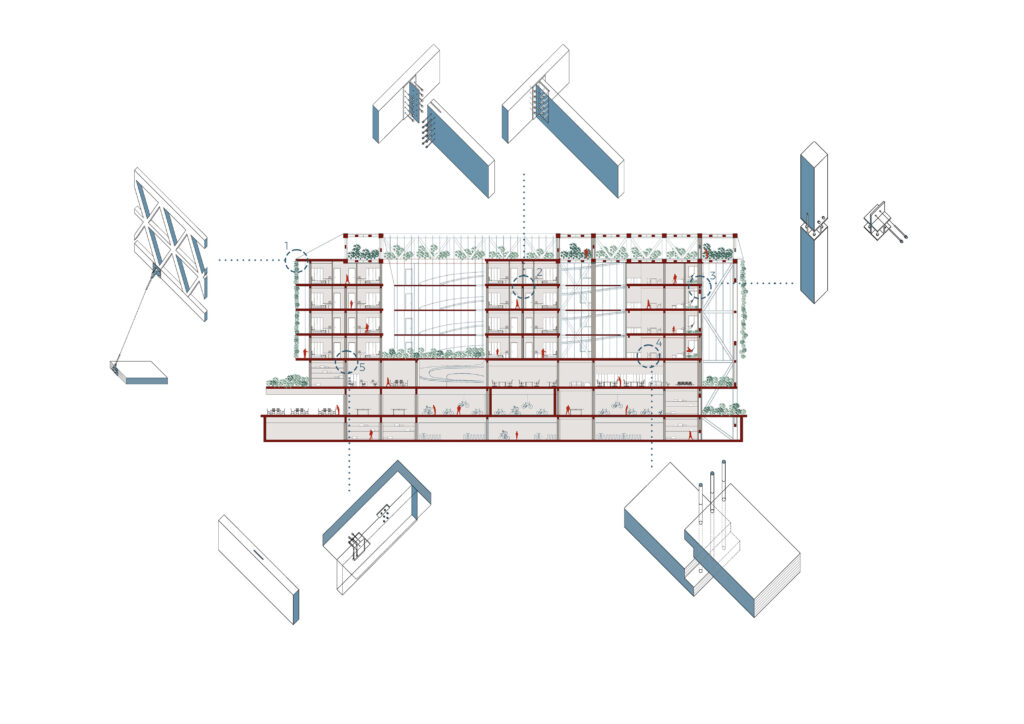Incorporating the principles of Industry 4.0, our architectural project redefines urban living by seamlessly integrating sustainable design strategies with advanced manufacturing techniques. With a focus on promoting bicycle culture and health, our industry manufactures bikes.
In this module, we understood the different parts of the building, focusing on how their structures work and are interconnected. The challenge of our project is threefold:
- Carry an open circulation space that flows throughout the building, from the basement all the way to the top
- Support the skin that wraps around the building
- Maximise the open space on the ground floor in the industrial zone.
Working with the restriction mentioned allows an exploration of different structural systems.
The structure can be works through 3 different systems: a green facade and slabs being held up by tensors, which are then attached to trusses supported by cores, and columns and beams within the houses. Each system has a role within the ecosystem that we created.
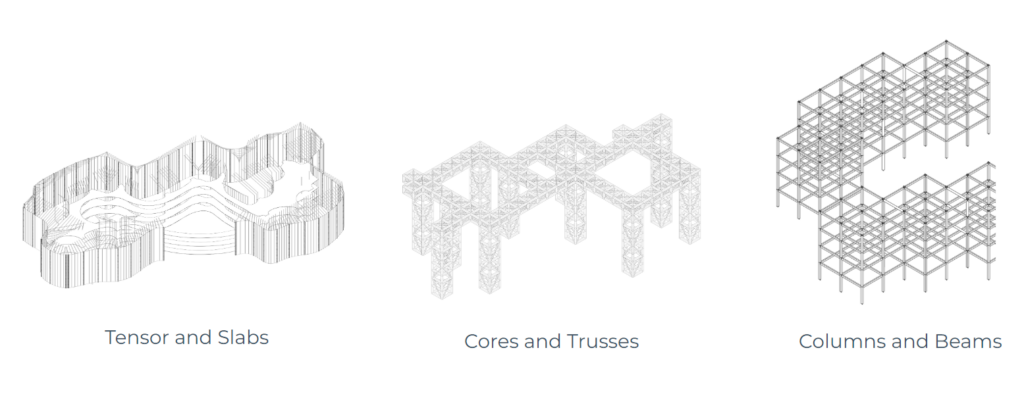
As a social and recreational space, we added a bike ramp going all the way from the ground floor through the industry, to the central velodrome and then all the way to the top. This bike ramp also gives our project its uniqueness. Both the bike ramp, including the circulation slab on each floor, and the aerodynamic facade are hung with tensors to our trusses doubling as greenhouses, reminding us of the spokes of bicycle wheels. The slabs are then hung to these trusses using tensors.
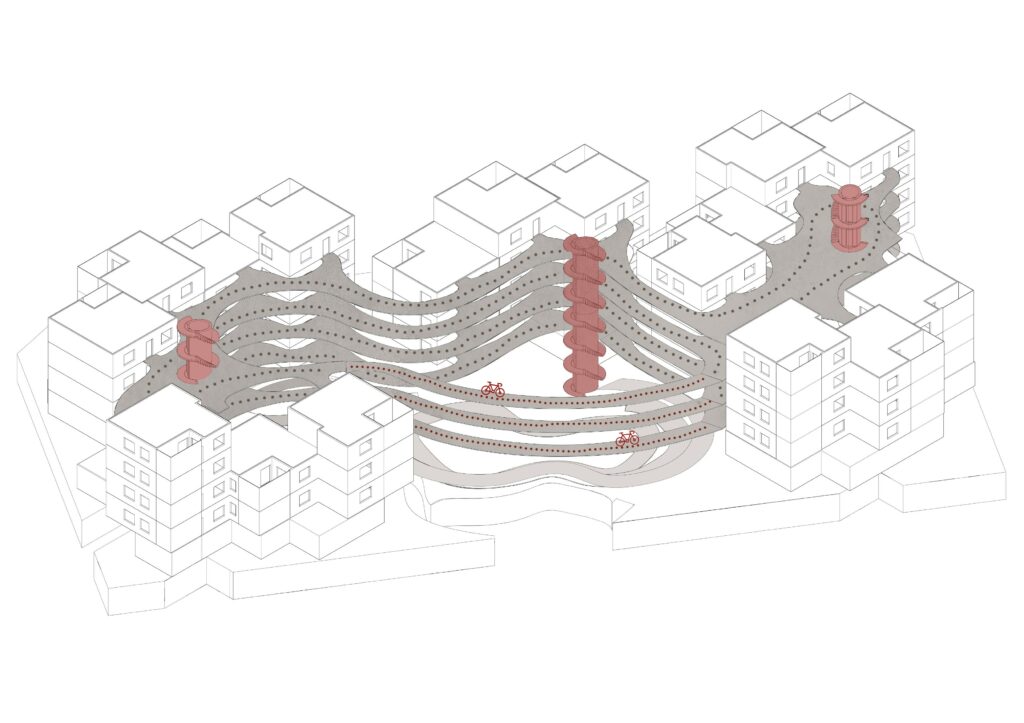
Starting from the top, we have different 3D trusses that follow our base structural 5m by 5m grid and are 3.5 m high. They are spread along the different building units to allow the truss to connect to al the edges of the building. The spaces inside the 3D truss double as greenhouses, which are connecting all the rooftops together. These trusses are supported by vertical cores, which also ensure the rigidity of the buildings below. Some of these cores are part of building units, others outside of building units and tree of them also contain the vertical circulation elements.
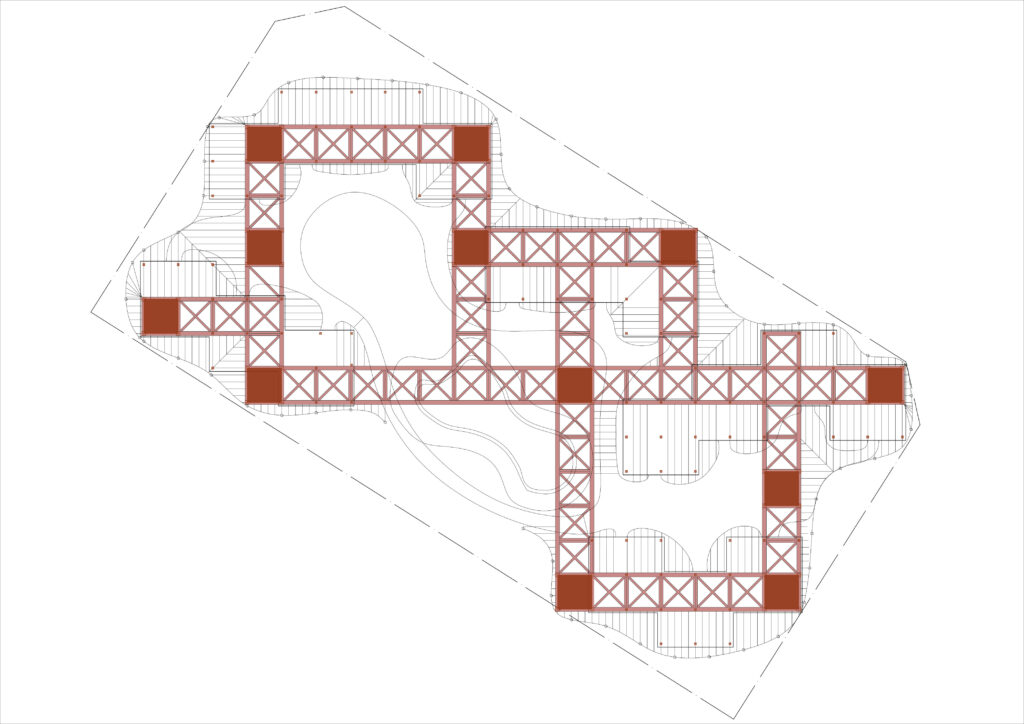
The inner structure of the residential building is further organised by the 5m by 5m grid. Their structure consists of wood posts and beams. At the industrial level, larger spans are needed; by adding higher beams, the spans can increase to 10 or 15 m.
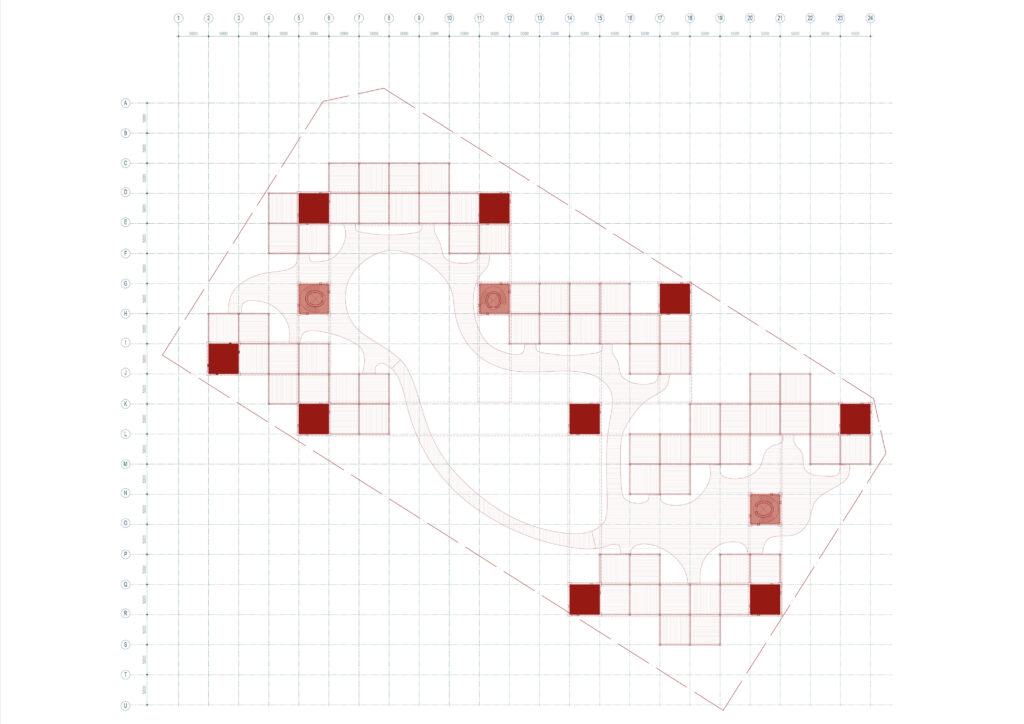
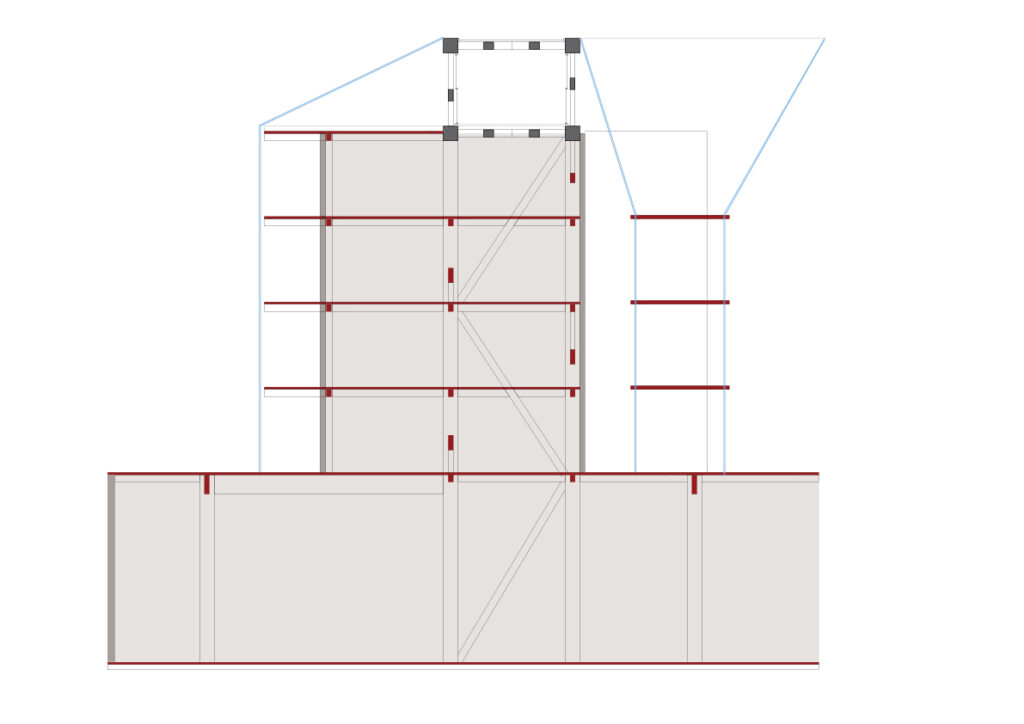
The wood elements are connected by a knife plate system.
